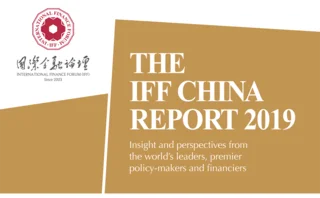
Beyond bilateral – The queue for CPEC


This year marks the sixth anniversary of China’s Belt and Road Initiative (BRI) – a suitable opportunity to review what we have learned from it, and where we want to go. Perhaps, in four years – as we analyse the 10th anniversary of the BRI – we will be able to look back on the many obstacles we have surmounted in its development.
The old globalisation has come under attack in recent years. We have witnessed nationalism and protectionism in many Western countries – including the US – which carry the potential to hamper global growth and prosperity. There is nothing wrong with globalisation except the manner in which it was implemented, which has created these feelings all over the world.

In 2013, realising these problems, the Chinese leadership, with President Xi Jinping at the helm, took charge and launched the BRI – a new incarnation of globalisation. It is important to understand the Chinese saying about prosperity being dependent on your neighbours’ prosperity – you cannot achieve prosperity in an ocean of deprivation and poverty. This is the governing philosophy behind the BRI, totally different from the old globalisation, which has led to massive income inequality across the world.
Corridor of power
The China–Pakistan Economic Corridor (CPEC), is the flagship and cornerstone of the BRI. It has the potential to transform Pakistan’s economy from low to medium income to high income within the next 15–20 years. CPEC covers everything from energy and key elements of infrastructure, including roads, motorways, seaports and airports, to developing communication and several economic zones.
More than half of western China is geographically adjacent or close to Pakistan, the Arabian Sea coastline and Pakistan’s deep-sea Gwadar Port. CPEC and Gwadar are significant because they will reduce 80% of the distance, 75% of the time and 70% of the cost when shipping from western China to the rest of the world.
Today, Gwadar has the capacity to handle approximately 1 million tons of cargo a year. By 2030, when the port is fully functional, it will have the capacity to handle 400–500 million tonnes and become one of the world’s largest ports, generating huge amounts of economic activity in this part of the world.
CPEC has the potential to assist Pakistan in building its infrastructure and balancing its regional development. It has overcome the energy crisis in Pakistan, and it will lead to industrialisation and export promotion through the establishment of nine special economic zones, developing agriculture, services, mining and quarrying, as well as the port and city itself. CPEC will lead to millions of jobs and strengthen regional connectivity. Pakistan has already started witnessing these benefits thanks to CPEC, the cornerstone of the BRI.
CPEC sounds like a bilateral product, but it is an initiative for the whole region, not only between China and Pakistan. In the first five years, CPEC has concentrated on Pakistan, but within the next five or 10 years, CPEC should be made a truly regional initiative. But how it can be done?
A regional powerhouse
Another regional bloc is the Central Asia Regional Economic Cooperation Program (Carec). Its 11 member countries include Afghanistan, Azerbaijan, China, Georgia, Kazakhstan, Kyrgyzstan, Mongolia and Pakistan, and a natural alliance exists between CPEC and Carec.
Carec is doing exactly the same thing as CPEC – promoting regional co-operation through transport, trade facilitation, energy and energy trade policies. This can be extended to bring Central Asia into the framework of CPEC, including – critically – Afghanistan, a neighbour of both Pakistan and China.
The extension of CPEC here depends on whether Afghanistan wants to fulfil its potential and reap the benefits. Afghanistan is a landlocked country that uses Karachi as its port; joining CPEC would be immensely beneficial as Gwadar – only 450km from the border – could serve as a second Afghan port.
Iran has also showed interest in becoming involved with CPEC. Today, the bilateral trade between Iran and China is about US$40 billion, mostly in oil and gas. And Iran intends to enhance its trade with China to $600 billion over the next seven years. This can only be possible if Iran takes advantage of CPEC and allows Gwadar and Chabahar to serve as sister ports.
Until 1985, Pakistan, Iran and Turkey were members of a bloc called the Regional Cooperation and Development Organization, and Pakistan continues to enjoy a very good relationship with these nations. Turkey could also take advantage of CPEC, and there is also a possibility that Russia could join CPEC to use Gwadar.
The BRI and renminbi internationalisation
China must prepare for the renminbi’s ascension to being the primary global currency. It has already taken the initiative in this direction and entered into a currency swap arrangement with 33 countries.
In the next decade, we will enter into a multiple-reserve currency system. The US dollar will remain one of the reserve currencies, but the renminbi will emerge as the single largest. In such a new environment, with Asia emerging as the leader of the world economy, new global financial architecture will be required.
Today, if any developing countries face a balance-of-payments crisis, they can go to the lender of the last resort for bailout, in this case the International Monetary Fund (IMF). As China’s BRI continues to grow and convince more countries to join, there is a need for the regional monetary system to support and complement the efforts of the IMF.
The world economy is expanding rapidly, and the IMF on its own may not be able to do justice to developing economies in the event of financial crises. Other initiatives have sprung up to support it. We have seen this in the establishment of the World Bank, one of the Bretton Woods Institutions, and the emergence of the Asian Development Bank in 1966, followed in 2016 by the Asian Infrastructure Investment Bank (AIIB). The World Bank cannot be expected to support the agenda of many developing countries, thus the Asian Development Bank came to the fore as an institution. Now, with the advent of the BRI, the AIIB is expected to play its role.
There remains a need for a regional monetary fund to supplement or complement the efforts of the IMF to maintain a stable global financial system. Maybe in four years’ time when we celebrate the 10th anniversary of the BRI, more countries will have joined – this is my hope and my prayer.
Only users who have a paid subscription or are part of a corporate subscription are able to print or copy content.
To access these options, along with all other subscription benefits, please contact info@centralbanking.com or view our subscription options here: subscriptions.centralbanking.com/subscribe
You are currently unable to print this content. Please contact info@centralbanking.com to find out more.
You are currently unable to copy this content. Please contact info@centralbanking.com to find out more.
Copyright Infopro Digital Limited. All rights reserved.
As outlined in our terms and conditions, https://www.infopro-digital.com/terms-and-conditions/subscriptions/ (point 2.4), printing is limited to a single copy.
If you would like to purchase additional rights please email info@centralbanking.com test test test
Copyright Infopro Digital Limited. All rights reserved.
You may share this content using our article tools. As outlined in our terms and conditions, https://www.infopro-digital.com/terms-and-conditions/subscriptions/ (clause 2.4), an Authorised User may only make one copy of the materials for their own personal use. You must also comply with the restrictions in clause 2.5.
If you would like to purchase additional rights please email info@centralbanking.com test test test







